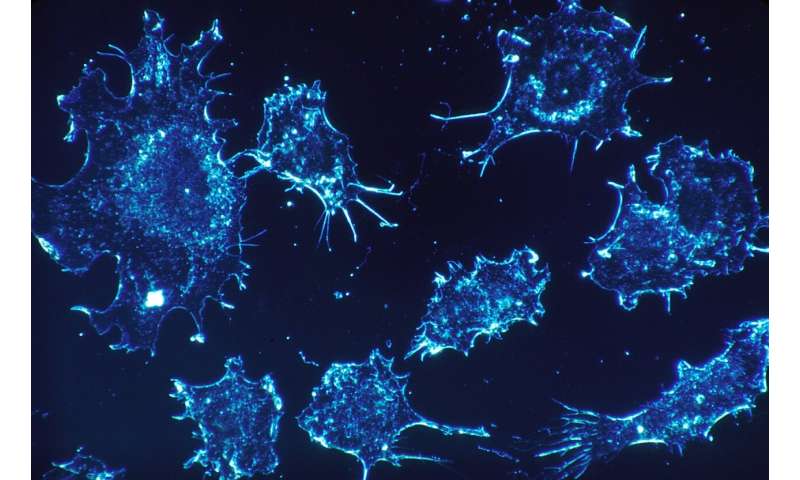New data on emerging treatments for liver cancer raise hope for advanced disease patients


New treatment options for people with advanced or unresectable hepatocellular carcinoma (HCC) may now be a step closer after three research groups presented safety and efficacy data at the Digital International Liver Congress (DILC) 2020. After a decade in which systemic treatment for advanced HCC was limited to a single option, sorafenib, these results build on other developments in recent years that could significantly improve the lives of patients with this difficult-to-treat condition.
Liver cancer is the second-most common cause of cancer fatalities worldwide, with HCC accounting for over 90% of primary liver cancers. Around 90% of HCCs are associated with widespread risk factors such as chronic hepatitis B and C infection, nonalcoholic fatty liver disease (NAFLD), alcohol intake and aflatoxin exposure. The prognosis for patients with HCC remains poor; in Europe, for example, the three-year survival rates for patients diagnosed with any-stage HCC while under surveillance is estimated to be 47.3%, and as low as 21.8% for those diagnosed while not under surveillance. However, an increasing number of emerging treatments in recent years have the potential to improve this outlook.
The IMbrave150 study, presented at DILC 2020 and now published in the New England Journal of Medicine, investigated the combination of atezolizumab and bevacizumab (atezo+bev) against the standard systemic therapy, sorafenib. In this randomized, open-label trial, patients with unresectable HCC who had not received prior systemic therapy were treated with either atezolizumab 1,200 mg intravenously (IV) + bevacizumab 15 mg/kg IV or sorafenib 400 mg twice daily. Improvements in overall survival and progression-free survival with the combination therapy have been previously reported in this trial. Median treatment durations were 7.4 months for atezolizumab, 6.9 months for bevacizumab and 2.8 months for sorafenib. Adverse events (AEs) of grade 3-4 were reported in 57% of patients receiving atezo+bev (n=329) and 55% of those receiving sorafenib (n=156). The most severe grade 5 AEs occurred in 5% and 6% of patients, respectively, and more patients receiving atezo+bev than sorafenib required corticosteroid treatment (12% vs 3%). The rate of immune-mediated hepatitis was comparable between treatments, while other AEs of special interest also occurred at similar rates and were mostly mild (grade 1-2).
“Atezo+bev was generally well-tolerated, and adverse events of interest in this class of therapy were manageable,” said Professor Michel Ducreux of the Gustave Roussy Cancer Center in France. “Combined with previous efficacy results, these data suggest that atezo+bev should be considered as the new standard of care in patients with unresectable HCC who have not received previous systemic therapy.”
A combination of the multikinase inhibitor lenvatinib and pembrolizumab, an antiprogrammed death receptor-1 monoclonal antibody, has also been investigated in a Phase 1b study in a first-line population. Patients received lenvatinib 12 mg/day (8 mg/day if weighing <60 kg) and pembrolizumab 200 mg IV every 21 days. In an initial safety phase (Part 1) with six patients, there were no dose-limiting toxicities reported.
A second phase (Part 2) included 80 patients as of 31 October 2019, with a median duration of treatment of 8.5 months and a median follow-up of 11.5 months. Median overall survival was 22.0 months (95% CI 14.6-not estimable) and median progression-free survival was 8.6 months (95% CI 6.9-9.7). The objective response rate was 43.8% (95% CI 32.7-55.3), with a median time to response of 2.4 months (range: 1.2-11.8) and a median duration of response of 12.6 months (95% CI 6.5-18.7). Disease control (defined as complete response + partial response + stable disease for 5 weeks) was achieved in 83.8% (95% CI 73.8-91.1) of patients. Treatment-related AEs occurred in 95% of patients, including 35% who experienced serious adverse events and three fatalities.
Encouraging results for patients with advanced HCC previously treated with sorafenib were also presented following a subgroup analysis of the CheckMate 040 trial. This study assessed the efficacy and safety of nivolumab + ipilimumab in three different dose combinations. In the cohort receiving ipilimumab at 3 mg/kg and nivolumab at 1 mg/kg, among 50 patients previously treated with sorafenib, the overall response rate was 32%, including four patients achieving complete response, and median overall survival was 22.8 months. This combination has been approved by the FDA as a second-line treatment after sorafenib. The results were further analyzed by duration of prior exposure to sorafenib (up to six months vs more than six months). Response rate (36% vs 29%), disease control rate (63% vs 46%), and median overall survival (25.5 vs 19.2 months) were numerically higher in the subgroup of patients with longer duration of prior sorafenib. However, less favorable disease characteristics at baseline in the subgroup with shorter duration of prior sorafenib may have had an impact on these outcomes. In terms of safety, treatment-related adverse events of any grade and grade 3 or higher were reported at similar rates. The same was true for liver toxicities although aspartate aminotransferase (AST)/alanine aminotransferase (ALT) elevations of grade 3 or higher were more frequent among patients with a shorter duration of prior sorafenib. The low numbers of patients in subgroups mean that a cautious interpretation of these data is warranted.
“Nivolumab and ipilimumab led to clinically meaningful benefits and a manageable safety profile in patients previously treated with sorafenib,” said Professor Bruno Sangro of the Clinica Universidad de Navarra, Spain. “Altogether, our results indicate that the NIVO1+IPI3 combination is a promising new treatment option for advanced HCC in the second line, independent of the duration of prior sorafenib administration.”
Source: Read Full Article